"The Beginner's Guide to Starting a Fitness Routine at Home
"The Beginner's Guide to Starting a Fitness Routine at Home"

Does the thought of joining a gym make you anxious? You're not alone. Millions of people feel intimidated by crowded fitness centers or struggle to find time in their busy schedules for regular gym visits. But here's the good news: you don't need an expensive gym membership to get fit and healthy. 🏋️♀️
Starting a fitness journey from the comfort of your home isn't just convenient - it's incredibly effective when done right. Whether you're looking to lose weight, build strength, or simply improve your overall health, a well-planned home workout routine can help you achieve your fitness goals while saving time and money. 💪
In this comprehensive guide, we'll walk you through everything you need to know about creating a successful home fitness routine. From assessing your current fitness level to selecting the right equipment and maintaining proper form, we'll cover the essential steps to help you build a sustainable workout plan that fits your lifestyle.
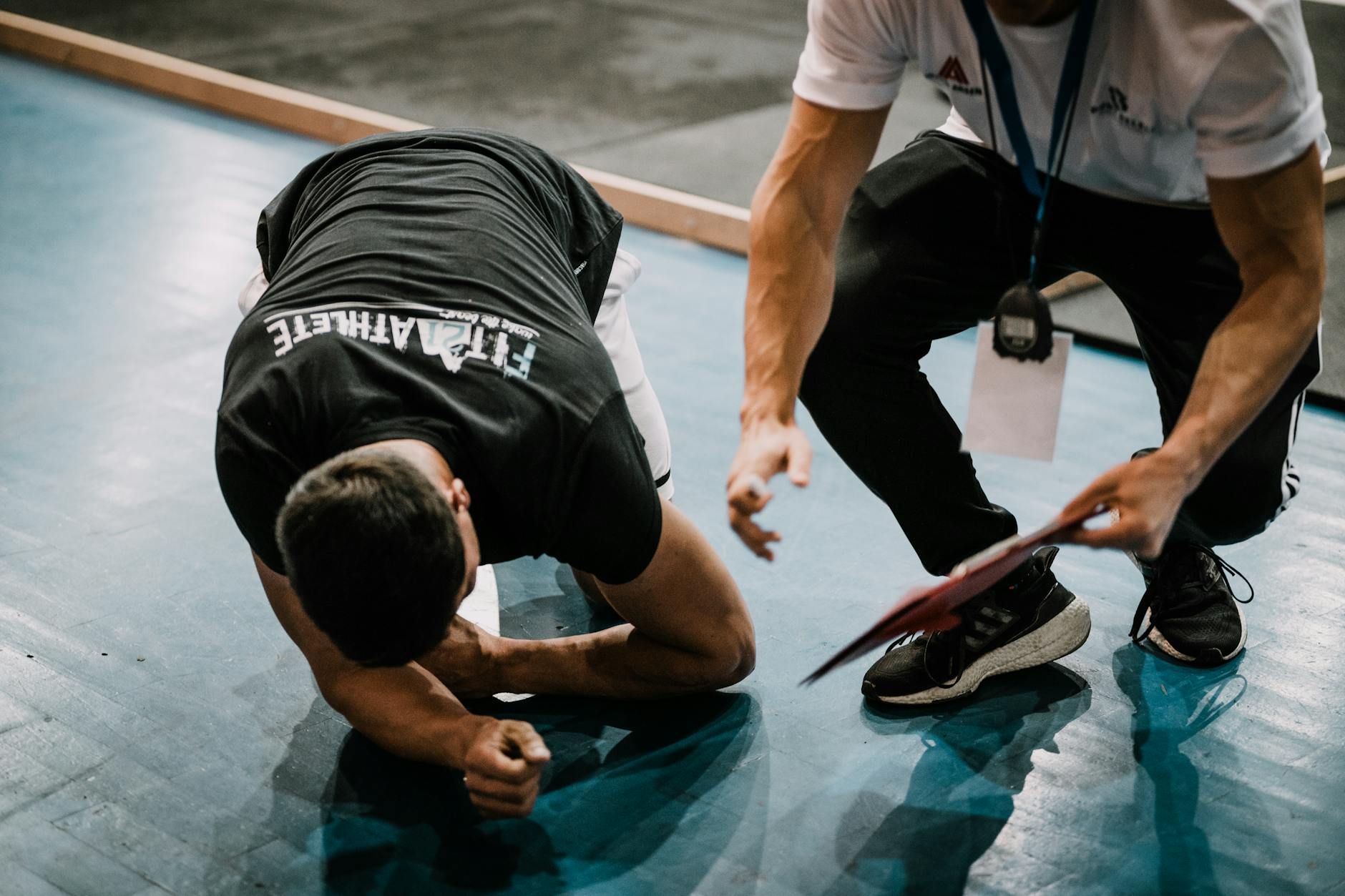
Assess Your Current Fitness Level
Simple At-Home Fitness Tests
Before starting your fitness journey, perform these basic tests to establish your baseline:
-
Push-up test (upper body strength)
-
1-minute plank hold (core strength)
-
1-minute jumping jacks (cardiovascular endurance)
-
Wall sit duration (lower body strength)
-
Sit-and-reach test (flexibility)
Record your results in a fitness tracking table:
| Test Type | Initial Score | 30-Day Goal | 90-Day Goal |
|---|---|---|---|
| Push-ups | X reps | X + 5 reps | X + 15 reps |
| Plank | X seconds | X + 20 sec | X + 60 sec |
| Jump Jacks | X reps | X + 10 reps | X + 30 reps |
Setting Realistic Goals
Create SMART goals based on your initial assessment:
-
Specific: Target exact numbers (e.g., "10 push-ups")
-
Measurable: Track progress weekly
-
Achievable: Start with small increments
-
Relevant: Focus on areas you want to improve
-
Time-bound: Set 30, 60, and 90-day milestones
Tracking Progress Methods
Monitor your fitness journey using these tools:
-
Progress photos (weekly)
-
Body measurements (bi-weekly)
-
Fitness test scores (monthly)
-
Workout diary (daily)
-
Digital fitness apps
Now that you understand your starting point and have set clear goals, let's look at the essential equipment you'll need for effective home workouts.
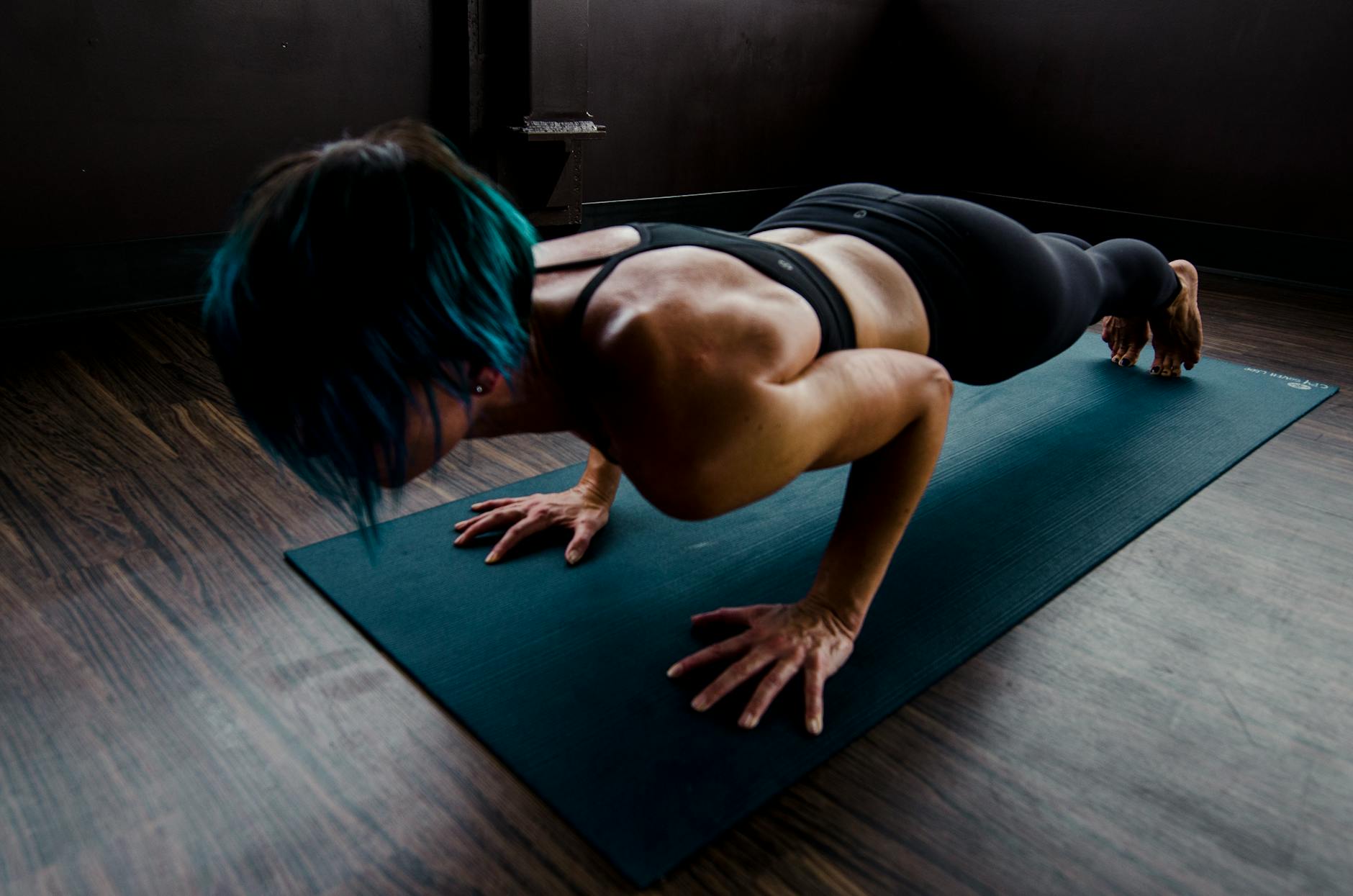
Essential Equipment for Home Workouts
Must-have Basic Equipment
-
Resistance bands (light, medium, heavy)
-
Exercise mat
-
Pair of adjustable dumbbells
-
Foam roller
-
Jump rope
Budget-friendly Alternatives
| Traditional Equipment | Household Alternative | Usage |
|---|---|---|
| Dumbbells | Water bottles/cans | Strength training |
| Yoga mat | Large towel/carpet | Floor exercises |
| Resistance bands | Old stockings/sheets | Mobility work |
| Bench | Sturdy chair | Step-ups/dips |
Creating Workout Space at Home
A dedicated workout area needs just 6x6 feet of clear space. Consider these essentials:
-
Good ventilation
-
Non-slip flooring
-
Mirror for form checking
-
Storage solution for equipment
-
Good lighting
Safety Considerations
Prioritize safety with these key measures:
-
Clear the area of obstacles and hazards
-
Maintain proper distance from walls/furniture
-
Check equipment condition regularly
-
Use non-slip mats on smooth surfaces
-
Ensure adequate ceiling height for jumping exercises
Creating an effective home gym doesn't require expensive equipment or vast space. Focus on versatile, multi-purpose items that align with your fitness goals. As you progress, you can gradually add more specialized equipment based on your evolving needs. Now that you have your equipment setup ready, let's explore how to build an effective workout plan.
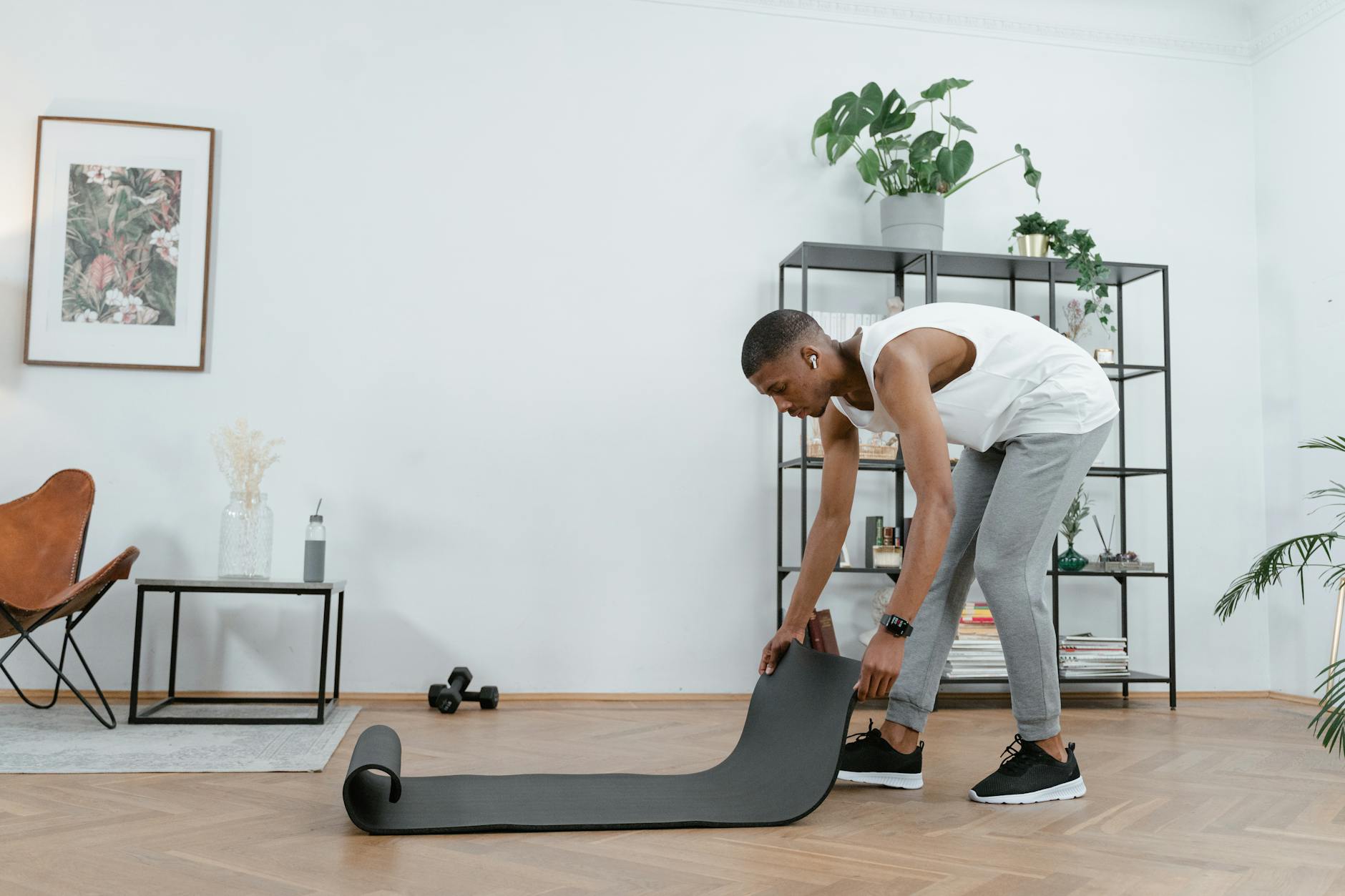
Building Your Workout Plan
Cardio Exercise Options
-
Walking or jogging in place
-
Jump rope exercises
-
High knees and mountain climbers
-
Burpees and jumping jacks
-
Stair climbing (if available)
Strength Training Basics
Incorporate these fundamental movements 2-3 times per week:
-
Push exercises (push-ups, dips)
-
Pull exercises (resistance band rows)
-
Squat variations
-
Core work (planks, crunches)
Flexibility Work
Perform stretching exercises daily:
-
Dynamic stretches before workouts
-
Static stretches post-workout
-
Basic yoga poses for beginners
-
Mobility drills for joints
Rest and Recovery Scheduling
| Day Type | Purpose | Duration |
|---|---|---|
| Workout Days | Active training | 30-45 mins |
| Active Recovery | Light movement | 15-20 mins |
| Rest Days | Complete rest | Full day |
Sample Weekly Routine
-
Monday: Cardio (20 mins) + Strength
-
Tuesday: Flexibility focus
-
Wednesday: Strength + light cardio
-
Thursday: Active recovery
-
Friday: Full-body strength
-
Saturday: Longer cardio session
-
Sunday: Rest day
For optimal results, start with 2-3 workouts per week, gradually increasing frequency and intensity. Remember to listen to your body and adjust the schedule as needed. Now that you have a structured plan, let's focus on mastering proper form for these exercises.
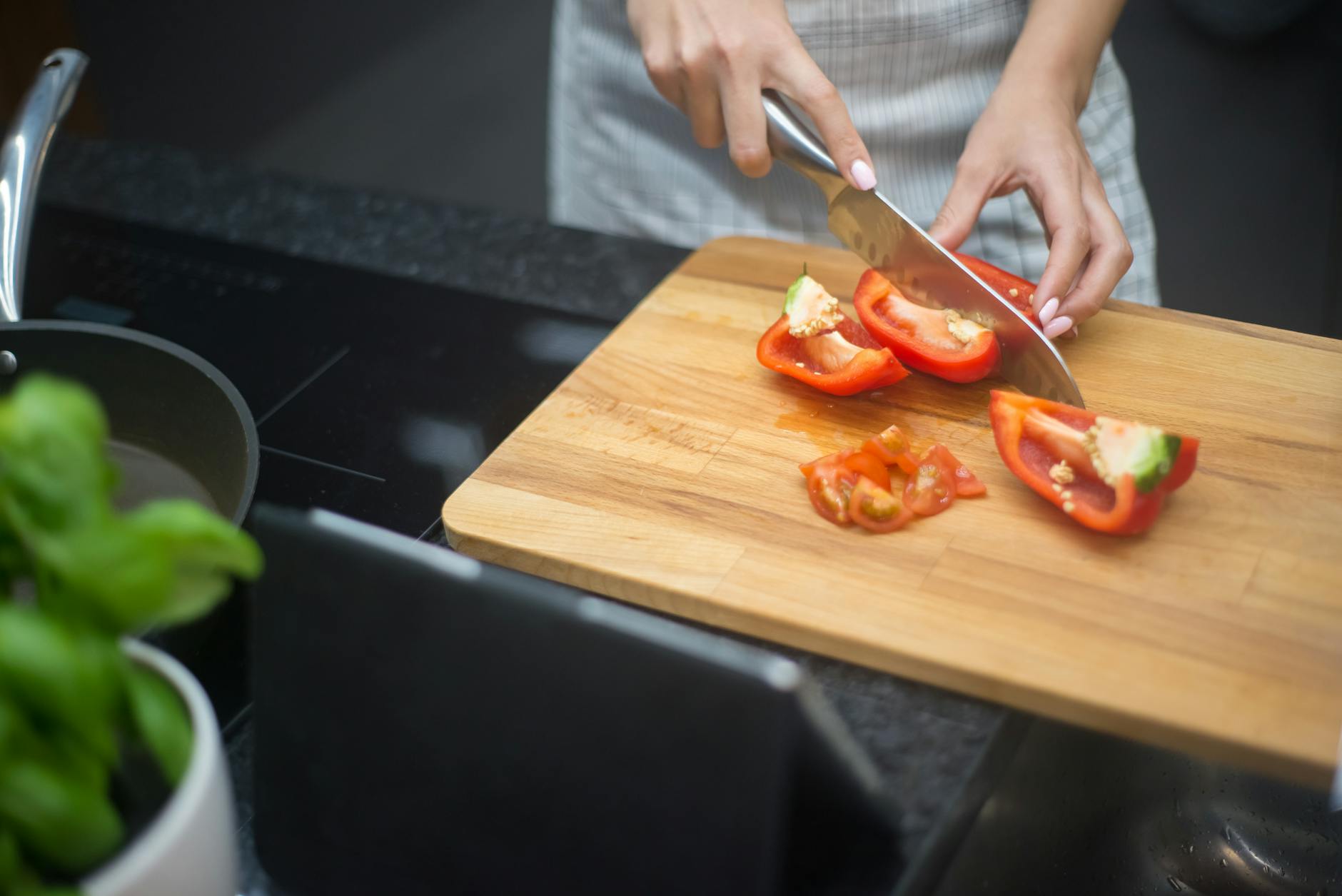
Mastering Proper Form
Basic Exercise Techniques
Proper form is the foundation of an effective and safe workout routine. When performing exercises, maintain these essential elements:
-
Neutral spine alignment during all movements
-
Controlled breathing (exhale during exertion)
-
Engaged core throughout exercises
-
Smooth, deliberate movements
-
Full range of motion within comfort limits
Common Mistakes to Avoid
| Mistake | Consequence | Correction |
|---|---|---|
| Rounded back | Spinal strain | Keep chest up, shoulders back |
| Rushed movements | Reduced benefits, injury risk | Control tempo, focus on form |
| Incorrect breathing | Decreased stability | Breathe with movement pattern |
| Overextending joints | Joint stress | Stay within natural range |
Using Mirrors and Videos
Self-monitoring is crucial for maintaining proper form. Position yourself where you can see your reflection in a mirror, focusing on:
-
Side view for exercises like squats and lunges
-
Front view for symmetry in movements
-
Full-body visibility for compound exercises
Record yourself performing exercises and compare your form to professional demonstration videos. Look for:
-
Body alignment
-
Movement patterns
-
Balance and stability
-
Range of motion
Now that you understand proper form fundamentals, let's explore how to stay motivated and consistent with your fitness journey.
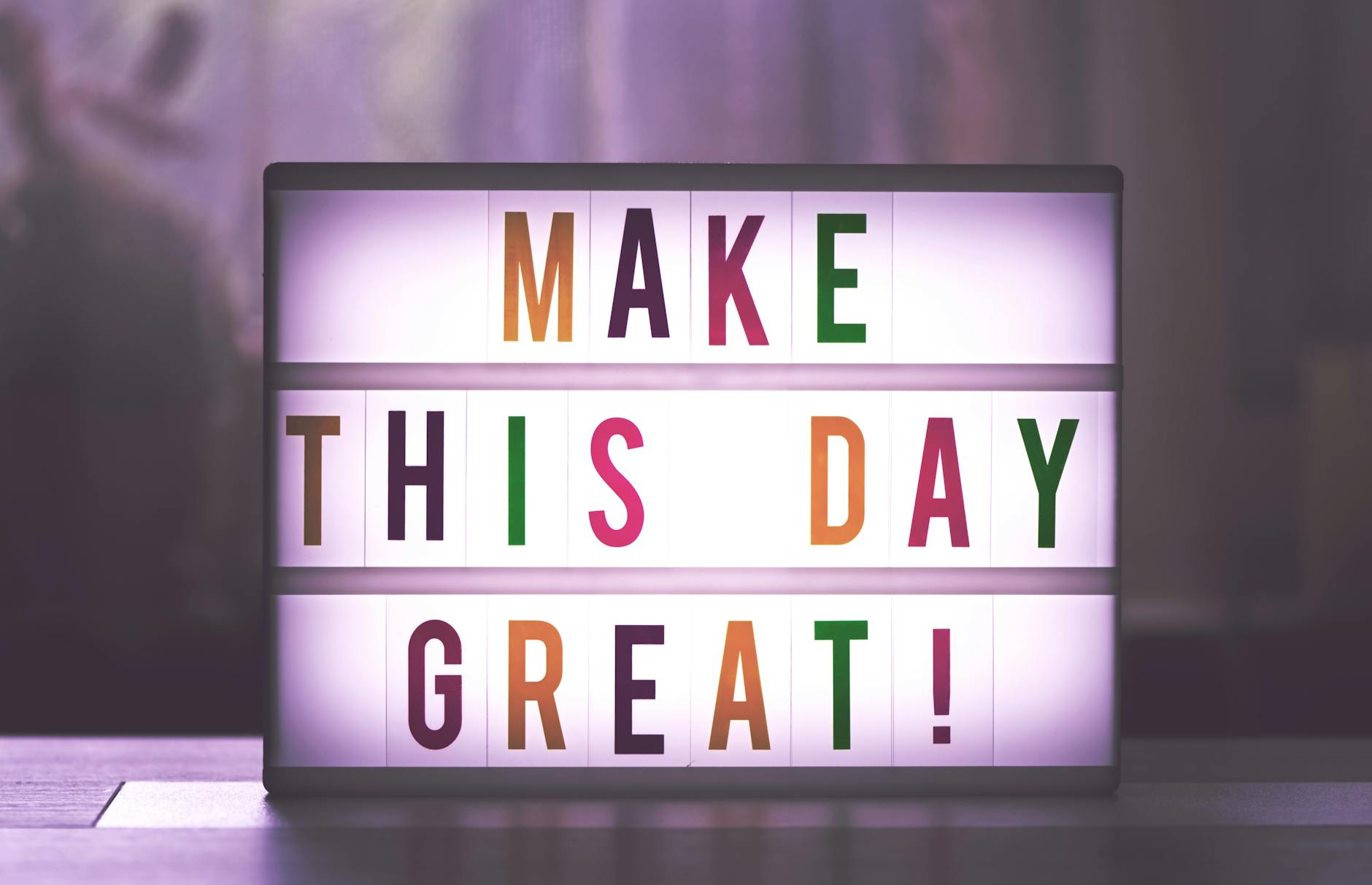
Staying Motivated
Setting Mini-Milestones
Break your fitness journey into smaller, achievable goals to maintain momentum. Instead of focusing solely on long-term objectives, establish weekly targets such as:
-
Completing 3 workouts per week
-
Holding a plank 10 seconds longer
-
Adding one more rep to each exercise
-
Drinking water before each meal
Creating Accountability Systems
Transform your commitment into consistent action through effective accountability measures:
| Accountability Method | Benefits |
|---|---|
| Workout Calendar | Visual progress tracking |
| Fitness Apps | Automated reminders |
| Workout Buddy | Mutual encouragement |
| Social Media | Community support |
Building Healthy Habits
Stack your fitness routine with existing daily habits:
-
Place workout clothes next to your bed
-
Schedule exercises right after morning coffee
-
Set phone reminders at specific times
-
Prepare workout space the night before
Tracking Achievements
Document your progress using these key metrics:
-
Take weekly progress photos
-
Record workout completion times
-
Monitor energy levels throughout the day
-
Note improvements in form and technique
Small wins build confidence and create momentum for long-term success. Keep a digital or physical journal to celebrate these victories, no matter how small they seem. With consistent tracking and celebration of achievements, you'll be better equipped to maintain your motivation and ready to advance to more challenging workout variations.

Progressive Advancement
Increasing Workout Intensity
As your fitness journey progresses, your body adapts to regular exercises. To continue seeing results, gradually increase intensity using the following methods:
-
Add more repetitions to existing exercises
-
Increase sets from 2-3 to 3-4
-
Reduce rest periods between sets
-
Incorporate resistance bands or weights
-
Extend workout duration by 5-10 minutes
Adding New Exercises
| Exercise Type | Beginner Level | Advanced Level |
|---|---|---|
| Cardio | Walking, Light Jogging | HIIT, Jump Rope |
| Strength | Body Weight Squats | Jump Squats |
| Core | Basic Planks | Side Planks with Rotation |
| Flexibility | Simple Stretches | Dynamic Stretches |
Adjusting Goals
Regularly update your fitness goals to maintain motivation and track progress:
-
Review current achievements monthly
-
Set specific, measurable targets
-
Challenge yourself with time-bound objectives
-
Focus on both strength and endurance improvements
-
Document progress through measurements and photos
Remember to increase difficulty gradually - aim for a 5-10% increase in intensity every 2-3 weeks. Listen to your body and maintain proper form as you advance. This systematic progression helps prevent plateaus while minimizing injury risks. Now that you have a solid understanding of progression, you can confidently move forward in your fitness journey.
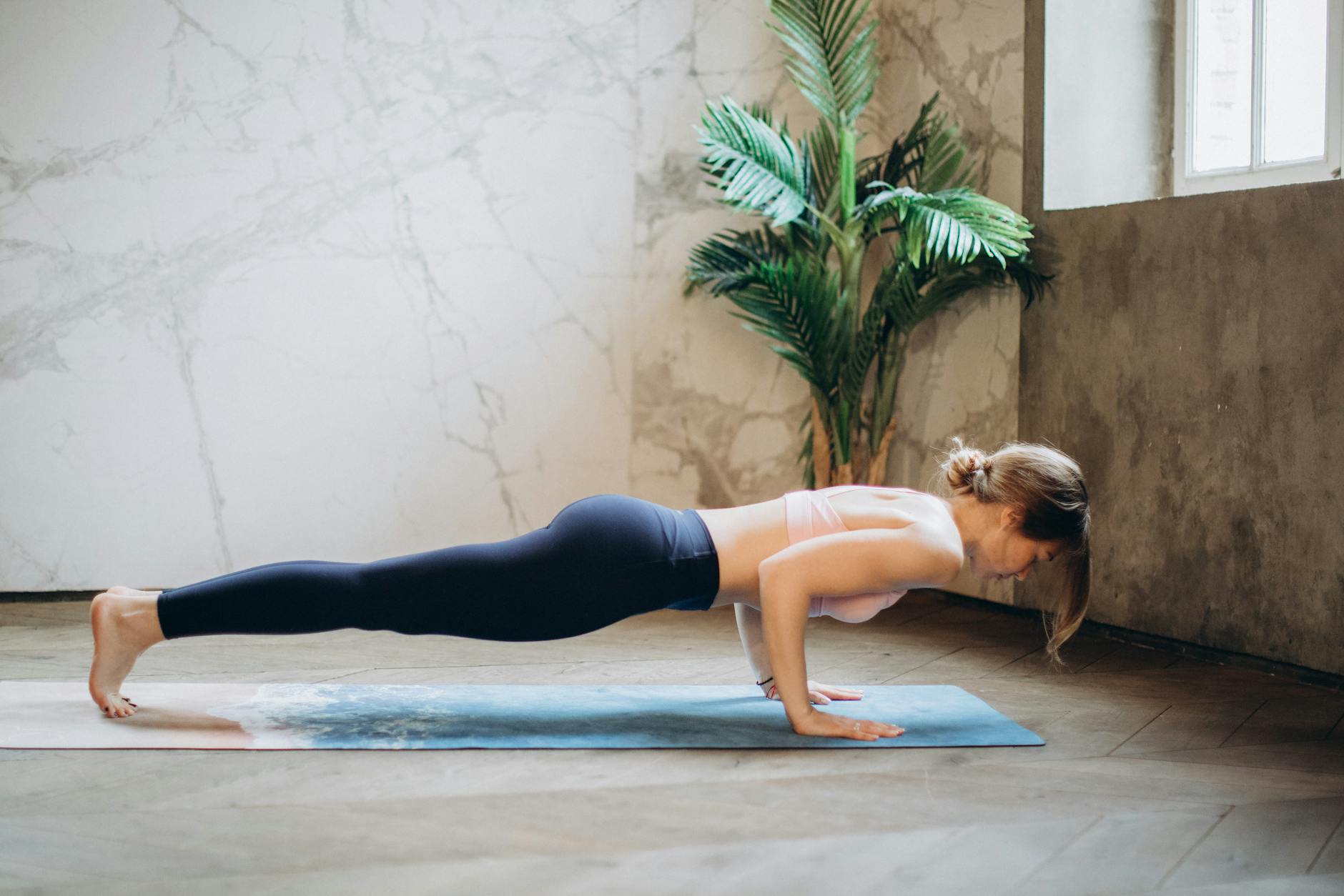
Starting a fitness journey at home is an achievable goal that requires proper planning, basic equipment, and consistent dedication. By following the essential steps - from assessing your fitness level to maintaining correct form and gradually progressing - you can create an effective workout routine that fits your lifestyle and schedule.
Remember that everyone's fitness journey is unique, and the key to success lies in starting small and building momentum. Take that first step today by setting up your workout space, choosing exercises that match your goals, and committing to regular practice. Your future self will thank you for making this important investment in your health and well-being. Thanks please shop at this link https://temu.to/k/uifq6nzjwac.

Comments
Post a Comment